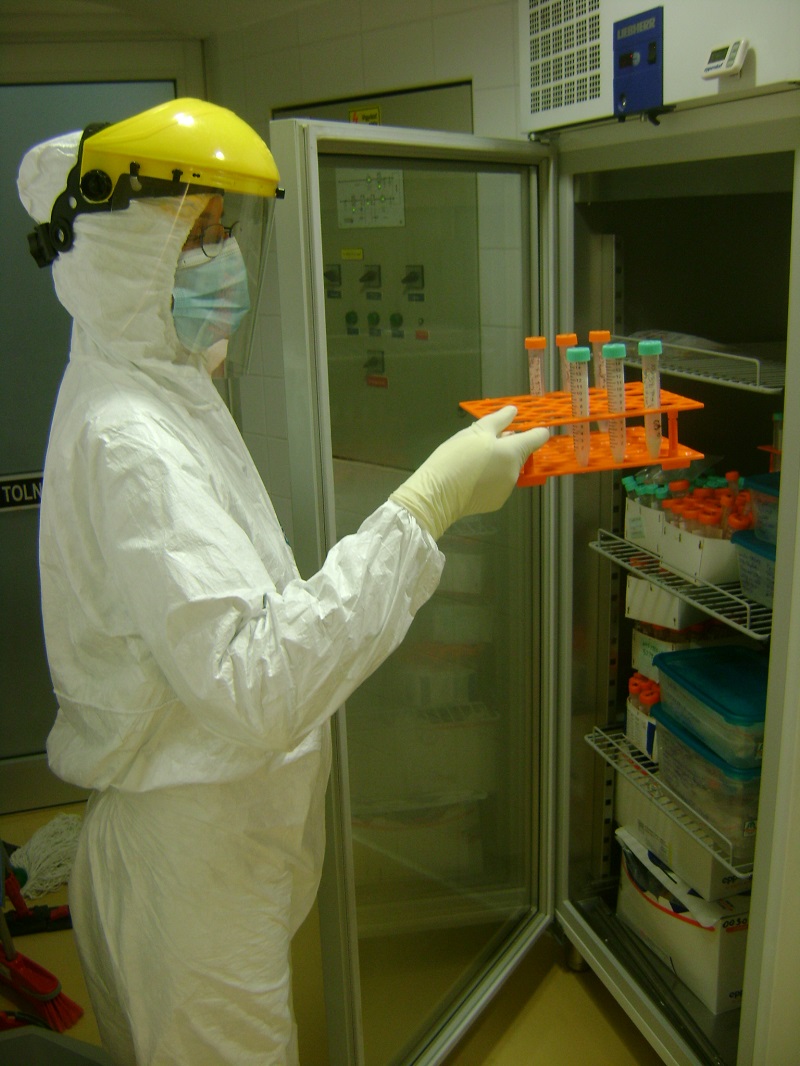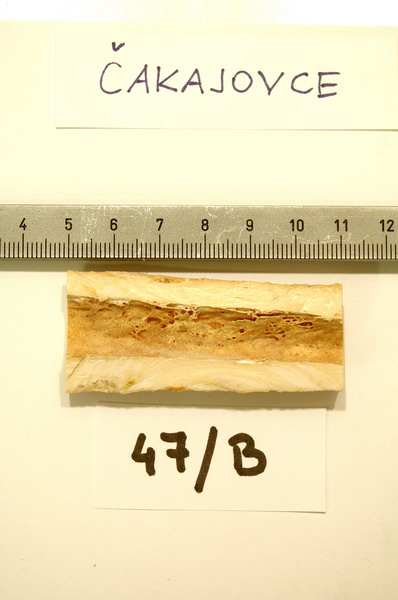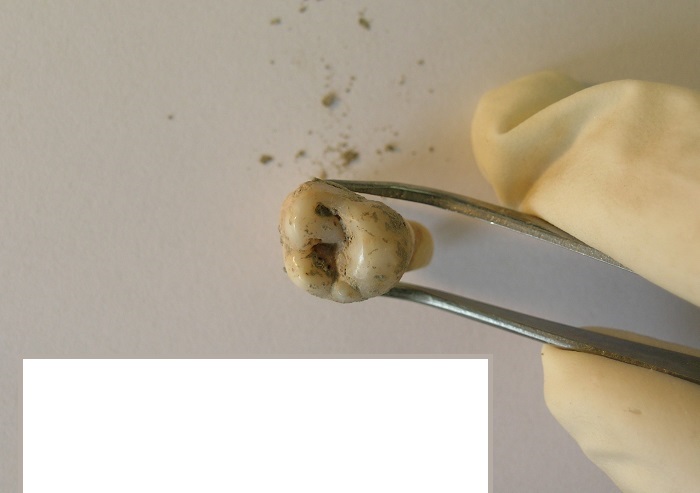 The most suitable material for archaeogenetic investigations is teeth and those bones, which have thick cortical tissue parts (compacta). These skeletal remains have the best ancient DNA preservation for our analyses. Recent results show that the petrosal parts of the temporal bones preserve particularly large amount of human DNA compared to other skeletal elements.
The most suitable material for archaeogenetic investigations is teeth and those bones, which have thick cortical tissue parts (compacta). These skeletal remains have the best ancient DNA preservation for our analyses. Recent results show that the petrosal parts of the temporal bones preserve particularly large amount of human DNA compared to other skeletal elements.
- Our primary target material is the petrous part of the temporal bones (pars petrosa ossis temporalis)
- The second examined materials are intact teeth from which molars are favored.
- Thirdly, long bones are sampled, which have relatively thick compacta, because this part keeps the aDNA in the best quality. Such bones include the femur, tibia, and humerus, which have a robust cortical substance.
Ancient DNA in the organic remains is exposed to effects of heat, thermal changes, humidity, and other environmental effects. Moreover, the post-excavation history of a specimen significantly influences the ancient DNA preservation and possible endogenous DNA content of the sample. In order to avoid modern DNA contamination of the studied specimens, in-situ sampling on the archaeological excavation is considered an ideal approach.






